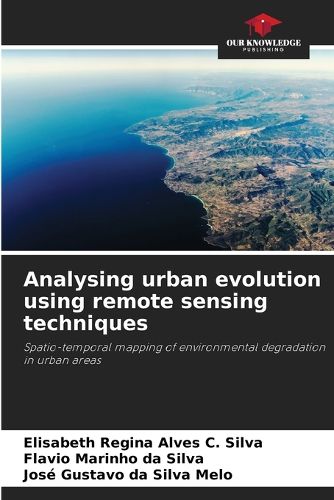Readings Newsletter
Become a Readings Member to make your shopping experience even easier.
Sign in or sign up for free!
You’re not far away from qualifying for FREE standard shipping within Australia
You’ve qualified for FREE standard shipping within Australia
The cart is loading…






Due to the intense urban growth of cities, green areas and water bodies are increasingly susceptible to environmental degradation. In this sense, there has been growing concern about ways to control and mitigate environmental degradation, which requires prior planning of land use. A survey of current land use, which is necessary for planning purposes, can be obtained using multispectral data provided by remote sensing satellites. The aim of this study was to carry out a spatio-temporal analysis of the Olho D'agua Lagoon, the main natural coastal lagoon in the state of Pernambuco, based on products obtained through remote sensing. Two biophysical variables were used in the evaluation: NDVI, to assess the chlorophyll content of the vegetation, and SAVI, to identify areas of degradation in the area. The study showed that vegetation with a high chlorophyll content has decreased considerably due to urban densification in recent decades. The NDVI result was corroborated by the SAVI results, which indicated an increase in degradation in the area.
$9.00 standard shipping within Australia
FREE standard shipping within Australia for orders over $100.00
Express & International shipping calculated at checkout
Due to the intense urban growth of cities, green areas and water bodies are increasingly susceptible to environmental degradation. In this sense, there has been growing concern about ways to control and mitigate environmental degradation, which requires prior planning of land use. A survey of current land use, which is necessary for planning purposes, can be obtained using multispectral data provided by remote sensing satellites. The aim of this study was to carry out a spatio-temporal analysis of the Olho D'agua Lagoon, the main natural coastal lagoon in the state of Pernambuco, based on products obtained through remote sensing. Two biophysical variables were used in the evaluation: NDVI, to assess the chlorophyll content of the vegetation, and SAVI, to identify areas of degradation in the area. The study showed that vegetation with a high chlorophyll content has decreased considerably due to urban densification in recent decades. The NDVI result was corroborated by the SAVI results, which indicated an increase in degradation in the area.